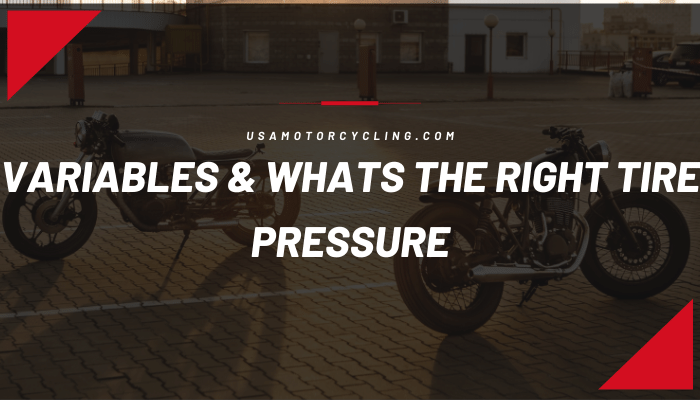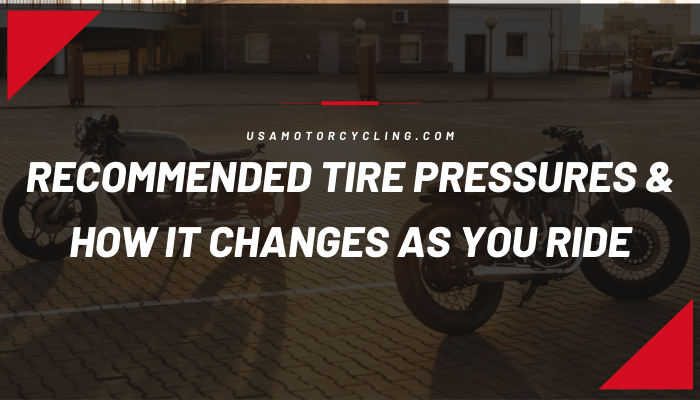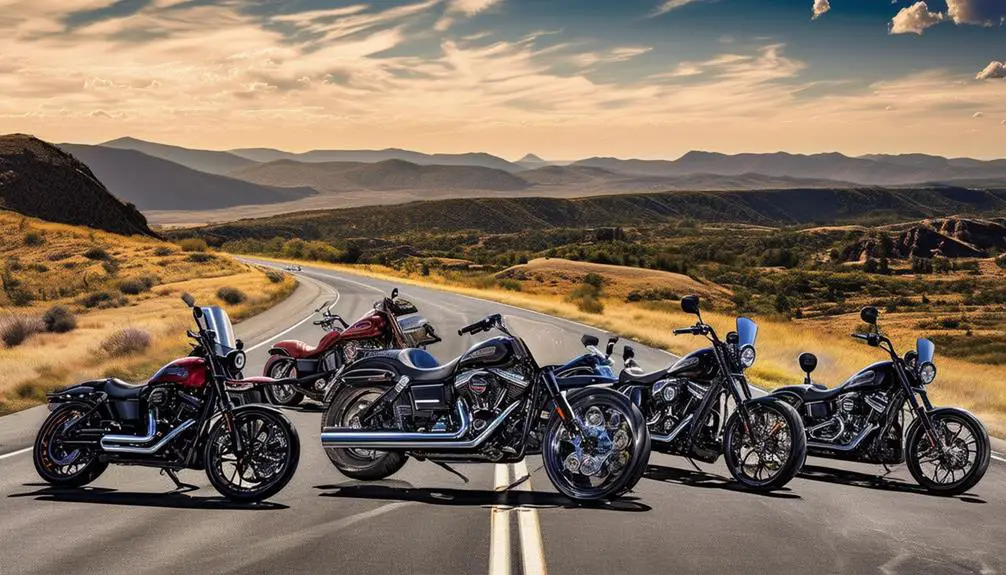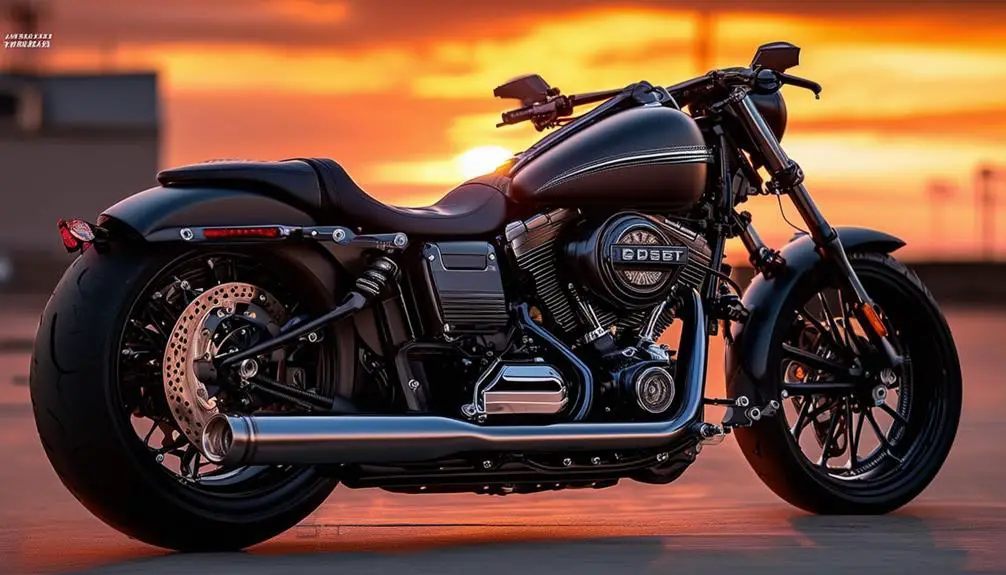While motorcycle tire pressure is often an afterthought for most riders, it’s actually one of the most important factors in riding a motorcycle. Motorcycle tires are more affected by tire pressures, when compared to traditional four wheeled vehicles, since the shape of the tire directly affects the ability of the bike to handle, turn, stop, and accelerate.
If the tire pressures in your motorcycle tires vary greatly, you can have an uneven response on either end of the bike, or you can unexpected results from inputs such as turning or stopping. While much more frequent than servicing your chain, changing your oil, rebuilding your forks, or replacing your tires, your air pressure is a key part of maintaining a motorcycle.
For less seasoned riders, this can create an unexpected disaster – but is equally important for new riders and seasoned veterans alike. Keeping reading so I can answer all of your questions!

Why Is Motorcycle Tire Pressure Important?
Tire pressure for your motorcycle plays a crucial role in the overall performance, handling, and safety of your motorcycle. The small contact patch between the tires and the road surface is the only source of traction for your bike. With the appropriate tire pressure, your motorcycle can effectively grip the road, leading to smoother and safer rides.
In addition to providing optimal grip, proper tire pressure helps in:
- Maintaining fuel efficiency
- Prolonging tire life
- Ensuring even tire wear
- Maximizing ride comfort
- Providing better handling and cornering ability
How Often Should I Check My Motorcycle Tire Pressures
Frequent tire pressure checks are essential in keeping your motorcycle in good working condition. For riders who ride frequently, checking tire pressure every other week is a good rule of thumb. For long-distance touring riders, it’s advisable to check tire pressure before setting out on a trip and periodically throughout the journey.
Properly Inspecting Your Tires
In addition to checking tire pressure, it’s essential to inspect your motorcycle tire for any visible damages or wear before a ride. Look for:
- Irregular wear patterns
- Cuts, punctures, or foreign objects lodged in the tire
- Bulging or blistering of the tire sidewalls
- Adequate tread depth
Regular inspection helps in identifying potential issues before they escalate, ensuring safer rides and prolonging the life of your tires.

What’s The Right Tire Pressure?
The ideal tire pressure for your motorcycle depends on several factors such as the type of tire, the weight of the bike, the riding style, and road conditions. To find the recommended tire pressure for your motorcycle, refer to the motorcycle owner’s manual or the placard attached to the motorcycle frame. The suggested optimal tire pressure will vary depending on the tire manufacturer, but as a general guide – see below.
These recommendations are for cold tires.
Keep in mind that the recommended tire pressure may vary depending on the type of tire. For example:
- Radial tires: 35-40 PSI
- Tubeless tires: 30-40 PSI
- Tubular tires: 35-45 PSI
What’s Your Riding Style?
Your riding style also plays a significant role in determining the optimal tire pressure. Riders who prefer high-speed rides on well-paved roads may want slightly higher tire pressure for better stability and handling. Those who ride on low-traction surfaces, such as dirt or gravel, might opt for slightly lower tire pressure for improved grip.

How To Properly Check Your Tire Pressures
To check your tire pressure accurately, follow these steps:
- Ensure your tires are cold, meaning they have been stationary for at least 2-3 hours.
- Remove the valve cap from the tire.
- Place the tire gauge over the valve stem and press down firmly until a hissing sound is heard, indicating air is escaping from the tire.
- Read the tire pressure on the gauge and compare it to the recommended pressure for your motorcycle.
- Adjust the tire pressure accordingly by either inflating the tire or releasing air.
- Replace the valve cap securely.
Tire Pressure Tips & Tricks
Here are some handy tips to help you maintain the ideal tire pressure:
- Invest in a reliable and accurate tire gauge.
- Check and adjust tire pressure regularly, ideally every other week for frequent riders.
- Consider your riding style and road conditions when adjusting tire pressure.
- Monitor how tire pressure changes with temperature fluctuations.
[recent_post_carousel design=”design-1″]
Using A Right-Angled Tire Pressure Gauge
This kind of tire pressure gauge has been a god-send in the motorcycle industry. The right-angle of the stem allows you to easily access the valve stem to check your air pressure.
Using a High-Quality Tire Gauge
It’s always recommended to use a high-quality tire gauge, whether it be checking your air pressure, or checking the remaining tread depth on your motorcycle tires. Additionally, it’s recommended to use a flexible air hose for convenience.

Risks of Improper Motorcycle Tire Pressures
Maintaining the correct tire pressure is crucial for your safety and the performance of your motorcycle. Here are some risks associated with improper tire pressure:
- Too little pressure: Under-inflated tires can lead to sluggish handling, excessive tire flex, and increased heat generation, resulting in reduced tire life and increased risk of tire failure.
- Too much pressure: Over-inflated tires can cause harsher rides, reduced grip, uneven tire wear, and increased vulnerability to punctures or impacts.
Using the Motorcycle Manufacturer Recommended Tire Pressure
It’s always best to start with the manufacturer’s recommended tire pressure to ensure optimal performance, comfort, and tire wear. However, if you feel adjustments are needed based on your riding style or road conditions, make gradual changes and monitor the effects on your motorcycle’s handling and performance.
Understanding the Max PSI for Motorcycle Tires
The max PSI value for any tire can be found on the tire sidewall. This value represents the maximum cold tire pressure that the tire can safely handle, regardless of the motorcycle, load, or riding style. The max PSI should never be exceeded as it can lead to tire failure and compromised safety.
How Does Tire Pressure Change as You Ride?
As you ride, tire temperature increases, causing the air pressure within the tire to rise. This is a normal phenomenon and should be taken into consideration when checking and adjusting tire pressure. Always check and set tire pressure when the tires are cold to ensure accurate readings.
Is Motorcycle Tire Pressure Affected by Temperature?
Yes, tire pressure is affected by temperature changes. As the temperature drops, the air inside the tire contracts, causing the tire pressure to decrease. Conversely, as the temperature rises, the air expands, leading to an increase in tire pressure. It’s essential to account for temperature fluctuations when checking and adjusting tire pressure.

FAQs and Related Questions
How Much PSI Should a Motorcycle Tire Have?
The ideal PSI for a motorcycle tire depends on the type of tire, the weight of the bike, and the riding style. Refer to your motorcycle owner’s manual or the placard attached to the motorcycle frame for the recommended tire pressure.
Should You Use The Maximum Air Pressure In a Motorcycle Tire?
No, using the maximum air pressure specified on the tire sidewall may lead to over-inflation, causing harsher rides, reduced grip, and uneven tire wear. Always follow the motorcycle manufacturer’s recommended tire pressure for optimal performance and safety.
Should Front and Rear Tire Pressure Be The Same on a Motorcycle?
Not necessarily. The front and rear tires may have different recommended tire pressures based on the motorcycle’s weight distribution and handling characteristics. Check your motorcycle owner’s manual or the placard attached to the motorcycle frame for the recommended tire pressure for both front and rear tires.
In conclusion, maintaining the correct tire pressure is essential for the safety, performance, and longevity of your motorcycle tires. Regularly check and adjust tire pressure according to the manufacturer’s recommendations and consider your riding style and road conditions for optimal results. Invest in a reliable tire gauge and make tire pressure maintenance a part of your routine motorcycle care.








Leave a Reply
You must be logged in to post a comment.